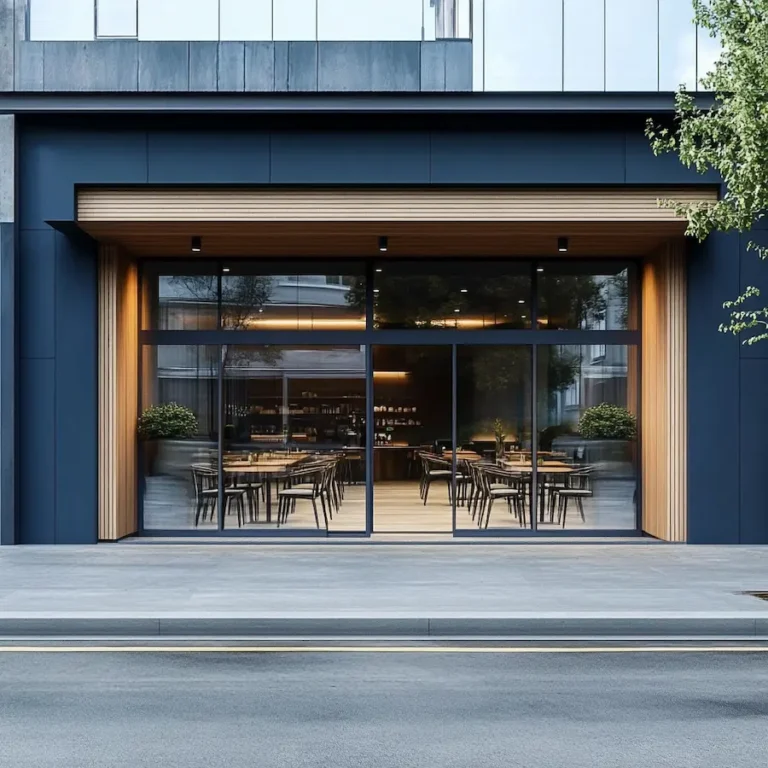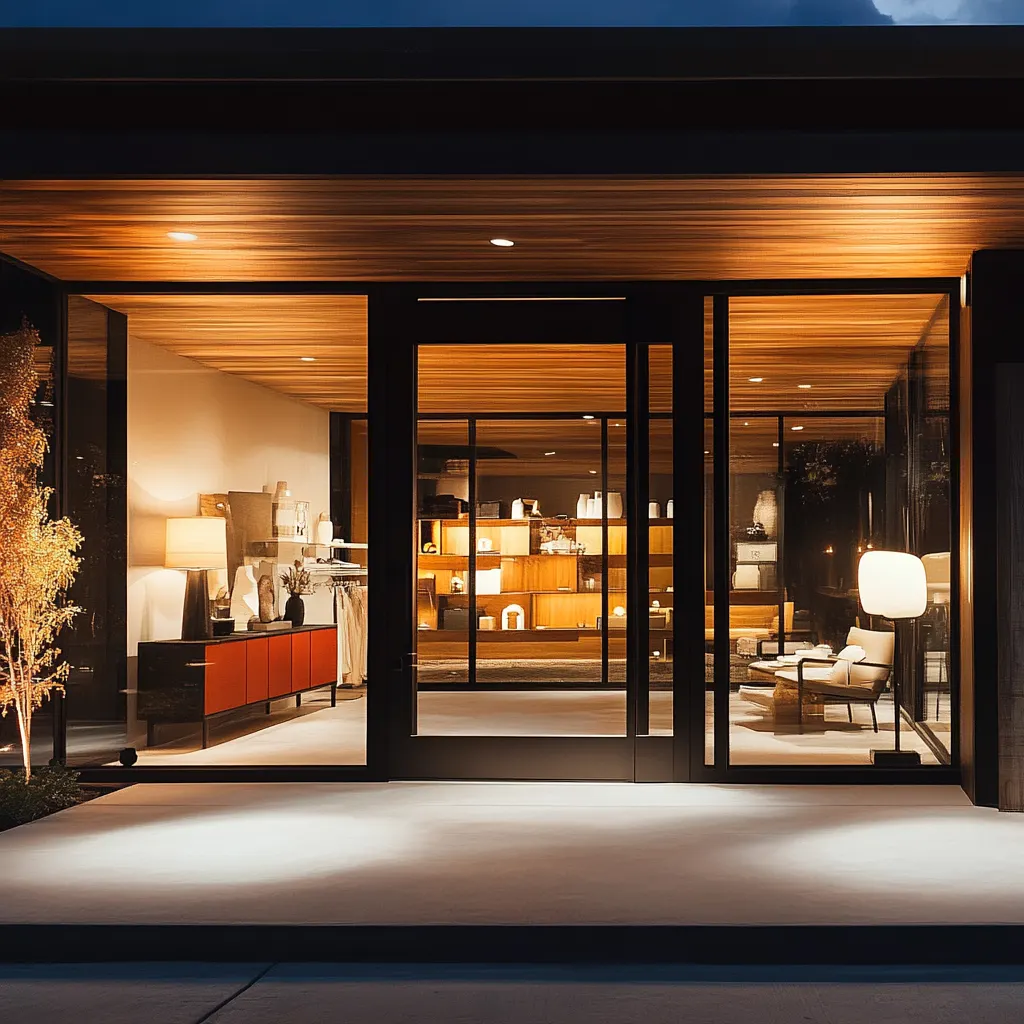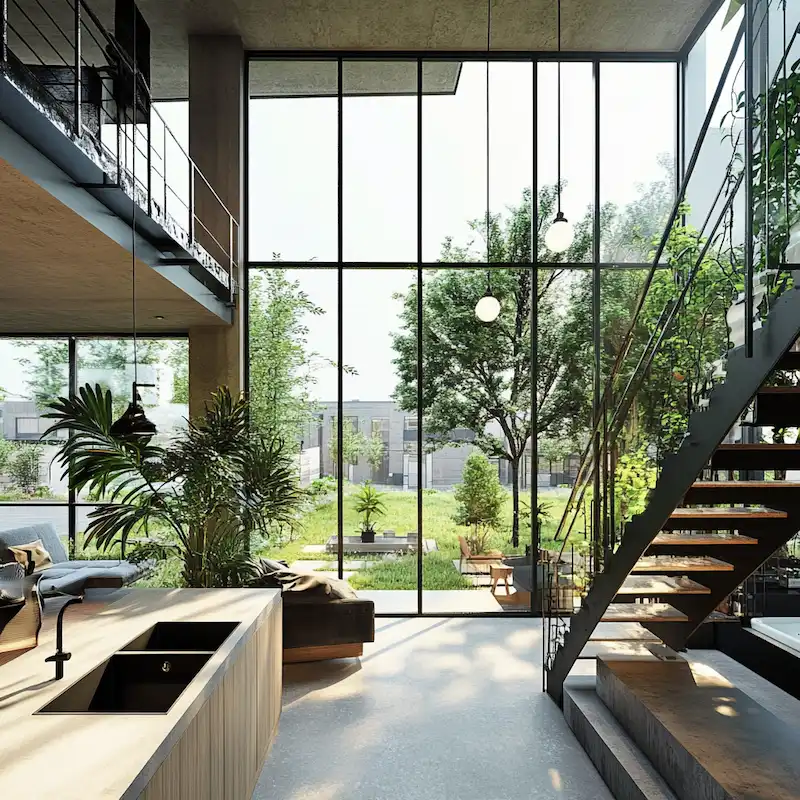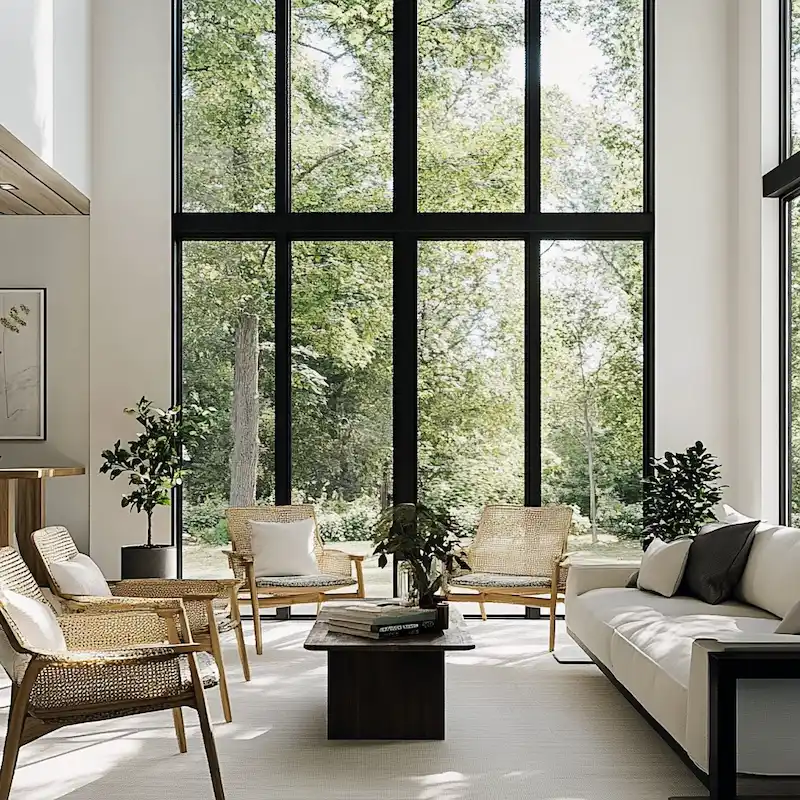Curious about a custom glass shelving project? At Glass Solutions, we're sharing the 9 top…

Curtain Wall vs Storefront Glass: The Benefits of and Uses for Each
As a business owner evaluating options for your commercial building, understanding the differences between a curtain wall vs storefront system is crucial. Both curtain walls and storefront glass offer distinct advantages in aesthetics, functionality, and energy efficiency, impacting your building’s design and performance. This guide explores the key differences, benefits, and costs to help you choose the right system.
At Glass Solutions, our commercial glass installation experts assist business owners in navigating the choice between curtain wall vs storefront systems. We’ll break down what a curtain wall is, how storefront windows differ, and key considerations for your building’s exterior.
Table of Contents
Curtain Wall vs Storefront: Key Differences
The primary difference between curtain wall and storefront systems lies in their structural design, intended use, and performance. Understanding these distinctions helps business owners select the ideal system for their commercial buildings.

Structural Design
Storefront systems are load-bearing, supporting the building structure at ground level or on the first floor. They use aluminum frames or structural silicone to secure large glass panels. Conversely, curtain walls are non-load-bearing systems that hang from the building’s exterior, attached via anchors to support their own weight and resist weather elements like wind.

Intended Use
Storefront windows are designed for low-rise retail spaces, restaurants, or small offices, emphasizing visibility and curb appeal. Curtain wall systems, however, are tailored for high-rise buildings, often spanning multiple floors to create a seamless exterior wall with a modern aesthetic.

Performance Characteristics
Curtain walls provide superior thermal and acoustic insulation, ideal for high-rise buildings in noisy or extreme climates. Storefront glass prioritizes natural light and aesthetic appeal, with moderate thermal efficiency suitable for one-floor applications.
| Feature | Storefront System | Curtain Wall System |
|---|---|---|
| Structural Role | Load-bearing system | Non-load-bearing |
| Typical Use | First floor, retail spaces | High-rise buildings, multiple floors |
| Insulation | Moderate thermal efficiency | High thermal and acoustic insulation |
| Frame Material | Aluminum window frame | Aluminum with vertical mullions |
Comparison of storefront and curtain wall systems.
What is Storefront Glass?
A glass storefront system uses large glass panels, typically tempered or laminated, secured by aluminum frames to create durable storefront walls for commercial buildings. These systems are ideal for ground-level retail spaces, enhancing visibility and inviting customers with natural light.
Benefits of Storefront Windows
Storefront glass walls offer a modern, aesthetically pleasing look, perfect for retail environments. Storefront glass systems typically employ structural glazing to showcase a beautiful appearance in a technologically advanced space. Their structural integrity ensures durability, while customizable glass options, such as energy-efficient glazing, enhance performance and reduce costs.
Key Advantages
- Aesthetically pleasing for retail spaces
- Maximizes natural light for better visibility
- Durable with tempered or laminated glass
- Customizable with security and energy-efficient glass options
- Low-maintenance storefront option
- Enhances curb appeal and property value

What is a Curtain Wall?
A curtain wall system is a non-load-bearing exterior wall used in high-rise buildings, consisting of curtain wall glass panels, aluminum frames, and vertical mullions. Designed to span multiple floors, it provides weather protection and a sleek appearance while resisting structural elements like wind or seismic forces.
Benefits of Curtain Walls
Curtain walls are highly customizable, offering a range of glass options and finishes to match any building design. Their high-performance thermal and acoustic insulation makes them ideal for high-rise buildings, ensuring energy efficiency and comfort.
Key Advantages

- Modern, sophisticated look for high-rise buildings
- Superior thermal and acoustic insulation
- Highly customizable with diverse glass and frame options
- Enhances energy efficiency with thermal breaks
- Maximizes views and natural light
- Durable with excellent weather resistance
- Increases property value and marketability
Window Wall: A Third Option
Besides curtain wall vs storefront, a window wall is another system to consider. Window walls are installed between floor slabs, offering a hybrid solution with load-bearing capabilities like storefronts but with the ability to span multiple floors like curtain walls. They provide a balance of aesthetic appeal and thermal efficiency for mid-rise commercial buildings.

Glazing Options for Storefront and Curtain Wall Systems
Both storefront and curtain wall systems support advanced glazing to enhance performance. Storefront glazing typically uses single or double-pane glass in aluminum frames, while curtain wall glass often incorporates insulated units with thermal breaks for superior insulation.

| Feature | Storefront Glazing | Curtain Wall Glazing | Window Wall Glazing |
|---|---|---|---|
| Glass Types | Single/double-pane, tempered | Insulated glass units | Single or insulated glass |
| Insulation | Moderate thermal efficiency | High thermal and acoustic insulation | Balanced insulation |
| Applications | Ground-level retail | High-rise exteriors | Mid-rise buildings |
Comparison of glazing in three systems.
Cost of Storefront Glass vs Curtain Walls
In North Carolina, storefront glass costs $50–$150 per square foot, driven by simpler installation and materials. Curtain wall systems, with complex structural elements and pressure plates, range from $175–$200 per square foot, reflecting their high-performance design for high-rise buildings.
Factors Impacting Costs
Costs for storefront walls depend on glass thickness, frame materials, and custom features like tinted glass. Curtain wall costs increase with advanced glazing, vertical mullions, and installation complexity for buildings spanning multiple floors.
Frequently Asked Questions
What is a curtain wall system?
A curtain wall system is a non-load-bearing exterior wall with glass panels and aluminum frames, designed for high-rise buildings to provide weather resistance and insulation.
How does a curtain wall vs storefront differ?
The key difference is that storefront systems are load-bearing for one-floor retail spaces, while curtain walls are non-load-bearing, ideal for high-rise exteriors with enhanced insulation.
What is a window wall?
A window wall is a hybrid system installed between floor slabs, offering load-bearing support and the ability to span multiple floors, balancing cost and performance.
Get a Free Quote for Your Glass Project
Ready to enhance your commercial building with a glass storefront, curtain wall, or window wall system? Glass Solutions in Raleigh offers expert guidance, professional installations, and free estimates. Contact us at 919-772-1007 or fill out the form below to request a free estimate or ask for more information on our glass installation projects.
Related Posts
- Custom Glass Shelving Ideas for Your Home
- Benefits of Microban Glass Protection for Shower Doors
Most homeowners get very excited the first time they hear about microban glass protection for…
- 5 Benefits of Using Glass Partitions in the Workplace
For much of 2020, the spread of COVID-19 means that businesses have either had to…
